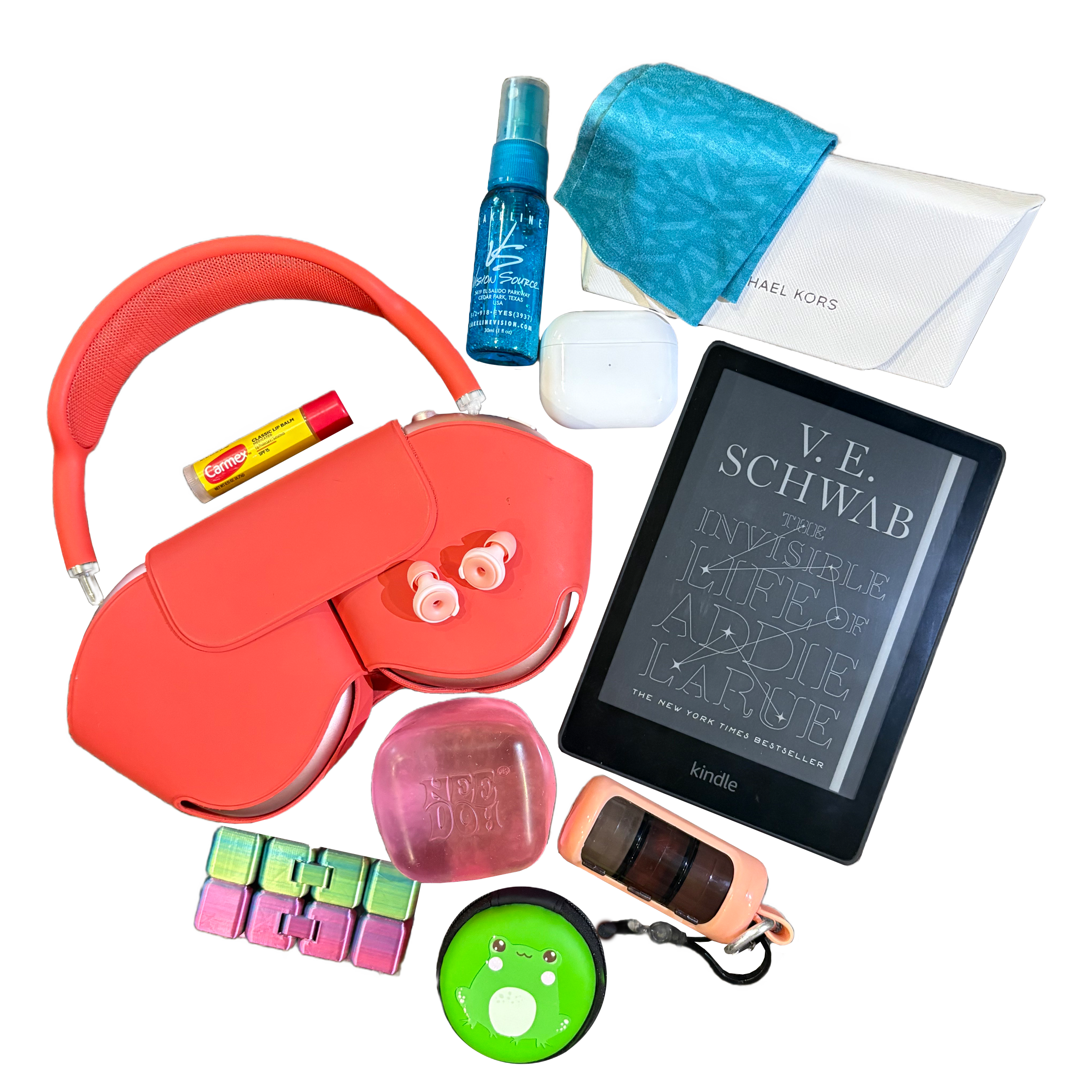Building Your Toolkit for Resilience
Cover image description: a collection of items in Normandy’s Resilience Toolkit, including Airpod Max noise cancelling headphones, Loop noise reduction earplugs, Airpod earbuds, chapstick, a Kindle Paperwhite, a Needoh Nice Cube, a multicolor infinity cube, travel medication cases, and a sunglasses case with cleaning tools.
Each time I present on neurodiversity, disclose my neurodivergence, or share my work online, I am flooded with people searching for guidance on being a neurodivergent occupational therapy practitioner. Many OTPs have found our way to occupational therapy because of our neurodivergence, but many others have discovered our neurodivergence through our work as OTPs. It is well documented that neurodivergence impacts work performance, especially in time management, impulse control, following hierarchies, and maintaining social relationships (ADDA, 2023; National Autistic Society, 2021). Neurodivergent employees are in desperate need of resilience in the changing times of increased accessibility of diagnoses and improved understanding of neurodivergence.
Building your toolkit starts with knowing yourself, your strengths, and your support needs. I recommend starting with the following online quizzes/questionnaires: Autism Spectrum Test, The Short Sensory Profile, and The Executive Skills Questionnaire or this Executive Skills Questionnaire (shorter). Once you have a thorough understanding of your personal strengths and support needs, you can start to build your Resilience Toolkit.
Let’s explore the basics of a Resilience Toolkit:
Medical Needs: consider electrolytes, maintenance and emergency medications, hand sanitizer, and health monitoring devices (such as a pulse-ox or thermometer)
Sensory Needs: consider all sensory systems. I like ALUP resources for identifying sensory up and down regulators. I try to keep at least one tool per sensory system in my toolkit, but keep must-haves of my most significant sensory support needs (i.e. my noise cancelling headphones and sunglasses come EVERYWHERE with me)
Executive Functioning Needs: consider tools like a notepad and pen or digital list, a planner or online calendar, a distraction for long wait-times, a visual timer, and/or visual schedules
Miscellaneous: consider maintenance of your tools - does anything need a charger or batteries? do you need lens wipes or lens cleaner for glasses/sunglasses? keep an eye on expiration dates for medications, and refill/replace them as needed.
Once you’ve built your Resilience Toolkit, it’s important to practice using the tools and strategies regularly. If you only pull it out when you’re already dysregulated, sorting through a bunch of tools may not be the most effective way to regulate your nervous system. Practice using tools in preventative and proactive ways, instead of waiting to react to environmental or circumstantial dysregulators. Adjust your toolkit as needed based on what is most beneficial in times of dysregulation.
Let me know what you would put in your Resilience Toolkit!
Attention Deficit Disorder Association (ADDA). (2023, July 24). Impact Of ADHD At Work. https://add.org/impact-of-adhd-at-work/
National Autistic Society. (2021, February 19). New shocking data highlights the autism employment gap. https://www.autism.org.uk/what-we-do/news/new-data-on-the-autism-employment-gap
